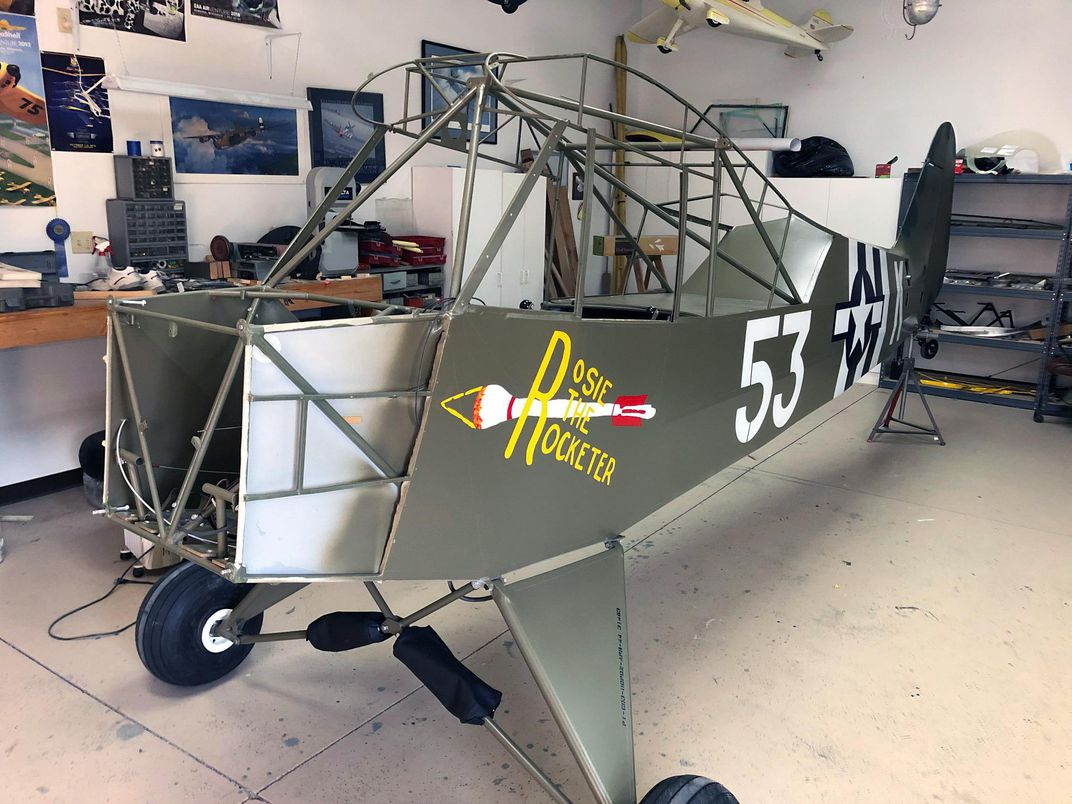It took 18 months of work, but Colin Powers has completed restoration work on “Bazooka” Charlie Carpenter’s Piper L-4H airplane, known as “Rosie the Rocketer.”
Carpenter is a World War II hero who was assigned to the 4th Armored Division of the 3rd Army, serving under General George S. Patton. Carpenter flew the plane to do reconnaissance, helping the armored division move more rapidly by flying ahead and spotting enemy tanks.
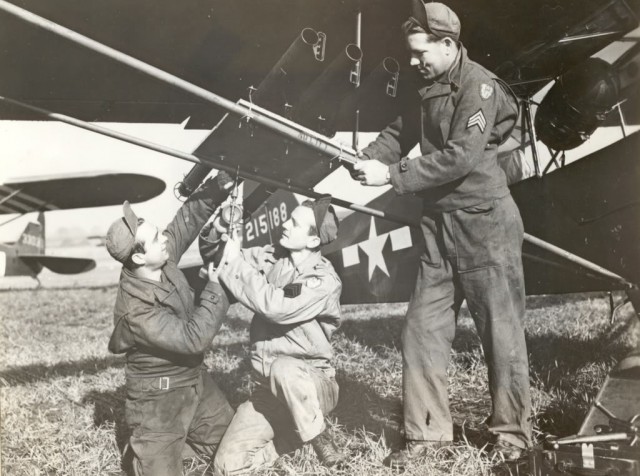
But Carpenter soon grew bored flying the unarmored, unarmed plane over enemy positions despite the inherent danger in the task. He was known to land the plane and join in with the fighting on the ground.
He earned his nickname when he strapped six bazookas, three under each wing, and began blowing up enemy tanks instead of just reporting on their whereabouts. The tactic got him in trouble with his superiors but Patton himself commended the pilot and he faced no consequences for his actions.
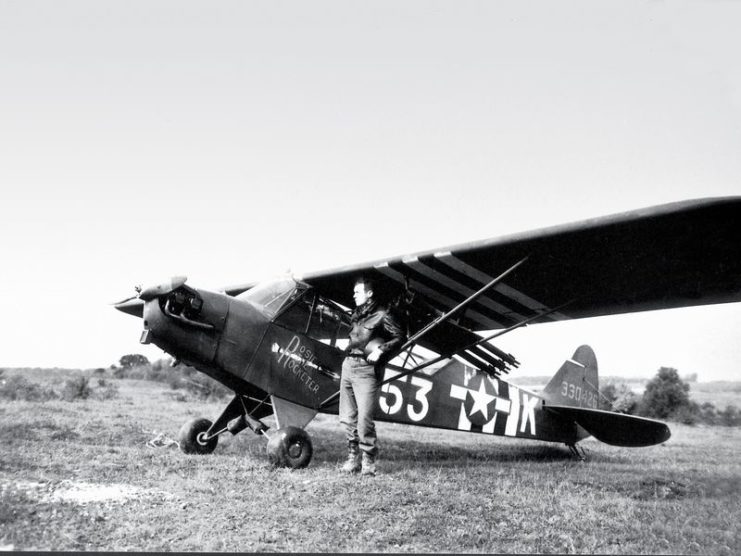
Carpenter was sent home from the war when he was diagnosed with Hodgkin’s disease, a type of cancer. He was given two years to live but the pilot who attacked tanks in a tiny reconnaissance plane wasn’t going down that easily. He went on to live nearly 21 years more. He worked as a teacher and ran a summer camp after the war.
He didn’t speak much about his experiences in the war, so after his death his daughter did some research and then wrote an article about him that was published in Warbirds of America, a magazine published by the Experimental Aircraft Association.
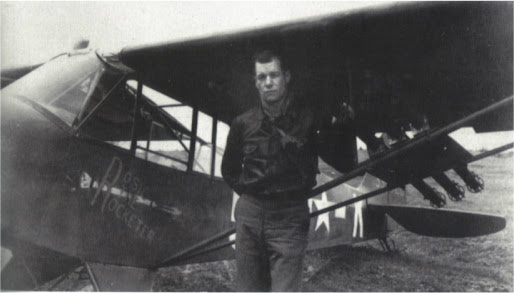
Jo Scheil read that article and took an interest in a photo of Carpenter standing next to his plane that was published alongside the article. In the photo, the serial number is plainly displayed on the tail. With a bit of research, Scheil was able to trace down the plane in a museum in Austria.
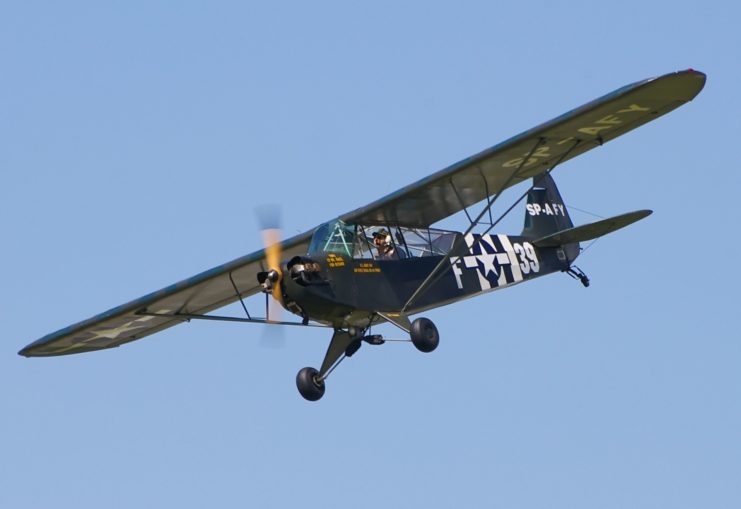
The small planes were too expensive to ship back home to the States so they were all scrapped or sold as surplus. Rosie the Rocketer was sold and spent the next several decades working in various civilian purposes before being placed in the museum.
Scheil turned to the Collings Foundation which was able to purchase the plane. They turned to Powers to have the plane restored because he had success with previous Pipers he had restored.
Now, after a year and a half, Powers has completed his work. The plane even boasts a recreation of the original logo on the side. He left the bullet hole he found in the wing which was received when he wandered too close to an enemy position.
The plane had been modified over the years. Powers replaced the engine with a period-correct engine. Three of the instrument panels had been replaced with German-language panels and had to be restored with proper panels from the WWII era.
Another Article From Us: Live Like a Bond Villain, 3 Remote Napoleonic-Era Forts For Sale
Powers had hoped to fly the plane at an experimental airplane convention in Oshkosh, Wisconsin, this summer but the COVID-19 pandemic put a stop to those plans. The plane will be displayed at the Collings Foundation museum in Massachusetts.
